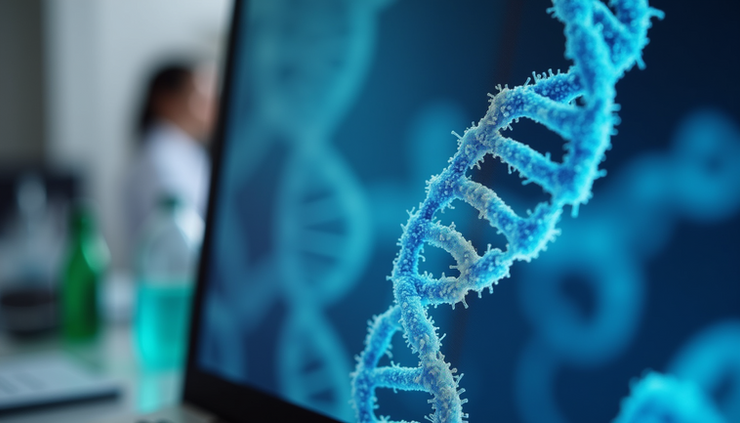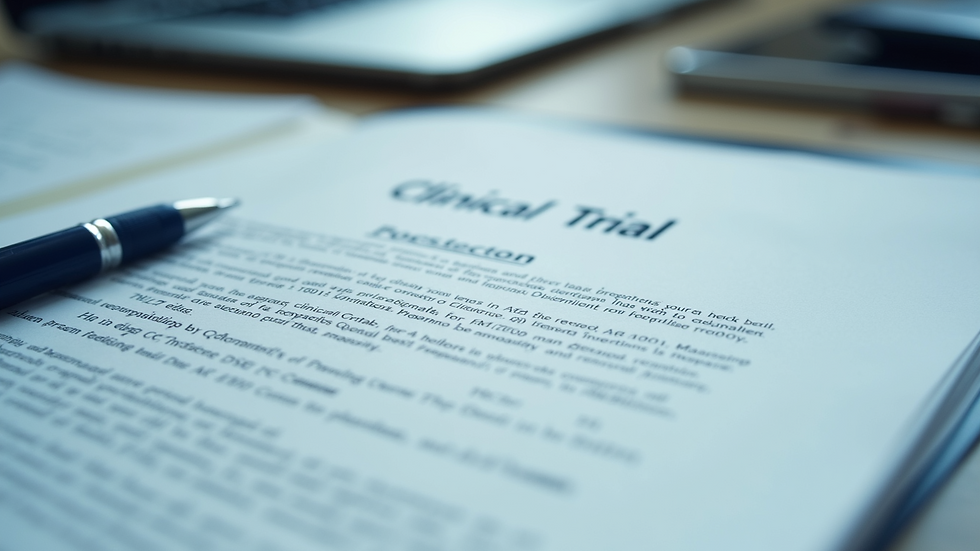Innovative Applications of AI in Protein Engineering Supported by Wet Lab Evidence
- Biotec Maven
- 6 days ago
- 3 min read
Artificial intelligence (AI) is transforming many scientific fields, and protein engineering is no exception. Designing proteins with specific functions has traditionally been a slow and costly process, relying heavily on trial and error in the lab. Today, AI accelerates this process by predicting protein structures, functions, and interactions with remarkable accuracy. What makes these advances truly compelling is the growing body of wet lab data that confirms AI predictions, bridging computational models and experimental reality.
This post explores how AI is reshaping protein engineering, highlighting key examples where AI-driven designs have been validated by laboratory experiments. We will cover AI methods used, their practical applications, and how wet lab results support these innovations.
How AI Enhances Protein Engineering
Protein engineering involves modifying amino acid sequences to create proteins with new or improved functions. Traditional methods include directed evolution and rational design, both of which require extensive lab work. AI introduces computational power to predict outcomes before experiments begin, saving time and resources.
AI Techniques in Protein Engineering
Machine Learning Models
These models learn patterns from large datasets of protein sequences and structures. They can predict how changes in sequence affect protein folding and function.
Deep Learning for Structure Prediction
Tools like AlphaFold use deep neural networks to predict 3D protein structures from amino acid sequences with high accuracy.
Generative Models
AI can generate novel protein sequences with desired properties by learning from existing protein databases.
Molecular Dynamics Simulations
AI accelerates simulations that explore protein movements and interactions, providing insights into stability and binding.
These techniques allow researchers to design proteins computationally, then test the most promising candidates experimentally.
Real-World Examples of AI-Designed Proteins Confirmed by Wet Lab Data
Designing Enzymes with Improved Activity
Researchers used AI to redesign an enzyme involved in biofuel production. The AI model suggested mutations predicted to enhance catalytic efficiency. After synthesizing the modified enzyme, wet lab assays showed a 40% increase in activity compared to the original enzyme. This confirmed the AI’s ability to identify beneficial mutations that traditional methods might miss.
Creating Novel Therapeutic Proteins
AI-generated protein sequences aimed at binding specific disease targets have entered experimental validation. For example, a team designed a protein to inhibit a viral enzyme. Laboratory binding assays and cell-based tests confirmed strong affinity and inhibitory function, supporting AI’s role in accelerating drug discovery.
Predicting Protein Stability
Protein stability is crucial for industrial applications. AI models predicted stabilizing mutations for a protein used in detergents. Wet lab thermal stability tests showed the engineered protein remained functional at higher temperatures, matching AI predictions.

Integrating AI Predictions with Experimental Workflows
AI does not replace wet lab experiments but complements them. The typical workflow includes:
Data Collection
Gathering protein sequences, structures, and functional data.
AI Model Training
Using datasets to train models that predict protein properties.
In Silico Design
Generating candidate protein sequences with desired traits.
Experimental Validation
Synthesizing proteins and testing their function, stability, or binding in the lab.
Feedback Loop
Using experimental results to refine AI models for better predictions.
This iterative process improves both AI accuracy and protein design success rates.
Challenges and Future Directions
While AI shows great promise, challenges remain:
Data Quality and Quantity
AI models require large, high-quality datasets. Some protein classes lack sufficient data for reliable predictions.
Complex Protein Functions
Predicting dynamic behaviors and multi-protein interactions is still difficult.
Experimental Bottlenecks
Synthesizing and testing many AI-designed proteins can be resource-intensive.
Future advances may include:
Improved AI models that integrate multiple data types (sequence, structure, function).
Automated high-throughput experimental platforms to rapidly test AI designs.
Expanding AI applications to design proteins for novel materials, biosensors, and environmental solutions.
Practical Tips for Researchers Using AI in Protein Engineering
Start with well-characterized proteins to build confidence in AI predictions.
Use AI to narrow down mutation candidates before lab work.
Combine AI with traditional methods like directed evolution for best results.
Collaborate with computational experts to interpret AI outputs effectively.
Validate AI predictions with multiple experimental assays to ensure reliability.
AI is becoming an essential tool in protein engineering, enabling faster and more precise design of proteins with tailored functions. The growing evidence from wet lab experiments confirms that AI predictions are not just theoretical but translate into real-world success. Researchers who combine AI with careful experimental validation can unlock new possibilities in medicine, industry, and biotechnology.


Comments